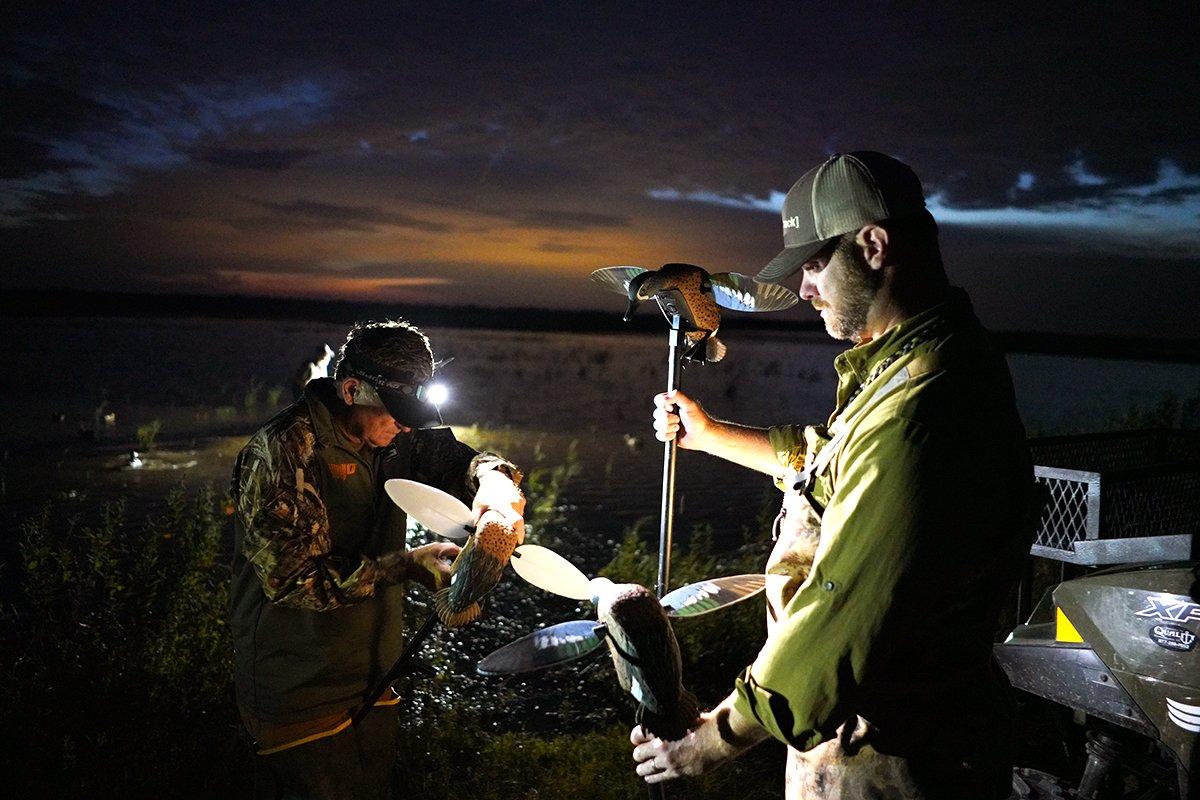The first of our five-part series about the spinning-wing decoy, and its impact on modern waterfowling
Few modern hunting products have had a bigger impact on the contingent of hunters using them than spinning-wing duck decoys. Trail cameras and deer hunters might be the only product that compares.
The spinning-wing decoy concept originated in California, but the Mojo Mallard, the first commercially successful spinner, debuted in December of 1999. The first duck hunters to see the thing in action couldn't believe how effective it was, and demand for it surged almost immediately. In the seasons that followed, the spinner became standard equipment in decoy spreads across the country, but especially in the southern Mississippi Flyway.
Of course, controversy soon followed.
The spinning-wing decoy is one of the few non-lethal (stuff that's not a firearm, bow, or crossbow) hunting products that I know of to have been specifically addressed by fish and wildlife commissions and in some states, like Arkansas, specifically addressed in the reg books. Though the controversy isn't as feverish as it once was, some hunters to this day believe spinning-wing decoys have forever changed waterfowling for the worse.
(Realtree Timber Products on Sale at the Realtree Store)
But others say that spinners were the great equalizer; the magic bullet that made the blue-collar guy with a dozen decoys able to pull birds away from the high-dollar clubs that were accustomed to holding all the ducks. Today, their effectiveness isn't as dramatic as it once was, so arguing over them seems to be a moot point. Besides, were we to outlaw spinners, what would come next? High-performance shotgun shells? Mud motors? Layout blinds?
From all of that are a bunch of interesting conversations. After years of listening to blind talk from both sides of the spinning-wing aisle, so to speak, I decided to dig into this series of interviews for Realtree's Outpost Podcast. We're going to talk about spinners, and along the way we'll hear from a Missouri duck guide, a former USFWS employee and refuge manager, a taxidermist who's hunted waterfowl all over the world, and Realtree's own waterfowl editor.
But first we're going to talk with Terry Denmon, the president of Mojo Outdoors and one of the key figures behind the Mojo Mallard. Denmon is a hardcore waterfowl hunter from Louisiana, and the host of Mojo TV. I've hunted with him multiple times, and have always been fascinated with the behind-the-scenes story of how that first decoy—including its iconic name—came to be. Regardless of how you feel about spinning-wing decoys, whether you use them yourself or not, this is a show no duck hunter should miss.
Check out the podcast:







